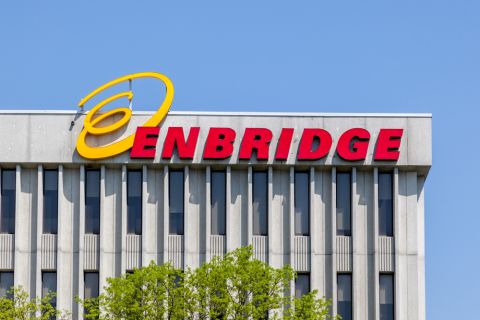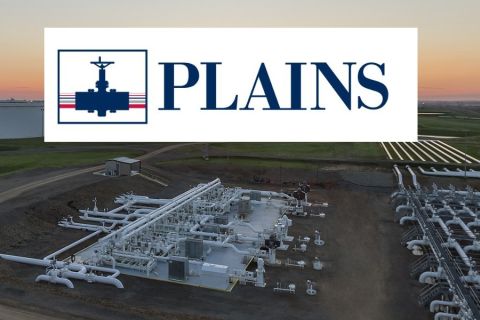Presented by:

Editor's note: This article appears in the E&P newsletter. Subscribe here.
Nationwide, the oil and gas industry generates more than 24 Bbbl of produced water annually, seven times the annual volume of crude oil produced. The industry faces significant constraints in the management, reuse and disposal of this annual volume of produced water.
In parallel, many Western states are challenged with both limited and continuously depleting resources of freshwater. It is clear that sustainable water recycling solutions are vital moving forward. Solutions must be safe, effective, cost-efficient and environmentally sound in the management of produced water and in the stewardship of freshwater resources.
Desal misconceptions
Desalination through traditional thermal evaporator systems is challenged in three primary areas: capital required, physical size and prone to scaling.
Several biases appear to exist regarding desalination within the oil and gas industry:
- Cost: desalination is too expensive;
- Capacity: desalination is unable to scale in size to treat meaningful volumes; and
- Waste stream: the resulting byproduct logistics are too burdensome.
New solution
HyQ’s high-capacity desalination system was designed to be cost-competitive and modular. HyQ accomplishes this through integration of Alfa Laval’s AlfaFlash ZLD Technology. HyQ and Alfa Laval have partnered in the development of U.S. oilfield produced water recycling applications.
HyQ’s modular, crystallizer system recycles produced water into two byproducts: distilled water and concentrated brine. The solution directly answers two significant constraints by generating a new, clean water resource and by minimizing the volume of produced water disposed by concentrating it into a brine slurry prior to injection.
HyQ’s solution excels in high TDS water, processes variable water on the fly, requires little to no pretreatment and is modular. HyQ has designed a fully mobile 800-bbl/d unit and a modular 10,000-bbl/d unit, both of which can be operated in parallel with additional units. Other capacity options are available.
HyQ’s approach provides two separate application scenarios: centralized production site and midstream.
Below is an illustration of a midstream application:

Byproduct benefits
For distilled water, the most immediate reuse application is back in the oil field as drill and frac water supply. Other beneficial reuse applications include agriculture irrigation, surface discharge, aquifer recharge and even spray evaporation. Each of these reuse scenarios results in a net positive gain to the water life cycle.
For the concentrated brine, reuse opportunities exist in oilfield operations through heavy brine for kill fluid and drilling fluid, clean brine for frac blending, and salt, iodine, lithium and other valuable element extraction. In addition to the byproduct benefits, cost savings in overall water management, increased disposal capacity, decreased trucking, curtailed emissions and reduced environmental risk will also be realized.
HyQ’s system excels in high TDS water, processes variable water on the fly (from below 10,000 mg/L TDS to 300,000 mg/L TDS) and requires little to no pretreatment.
The following graph illustrates the performance of the system in different oil and gas producing basins around the U.S.:

The overall viability and future benefit of any recycling solution hinges on one variable: cost. The following example of a commercial lease arrangement illustrates the cost of HyQ’s solution:

Existing clean brine treatment options are valuable and necessary, but the scope of their benefit is limited to areas and timeframes of drilling and exploration activities. HyQ’s solution serves the oil field in active drilling plays and in legacy producing fields as a complementary disposal solution.
Oklahoma field demonstration
To provide the oil and gas industry with technology validation, HyQ performed laboratory testing in March 2019 and a field demonstration in the summer of 2019. Four separate tests were conducted, processing more than 2,000 bbl of produced water with a TDS range of 158,000 to 191,000 mg/L. All water analysis was performed through an independent, third-party laboratory. The resulting averages from the four tests are illustrated below:

Results of field demonstration:
- No fouling, plugging or scaling
- Successfully processed varying TDS water on the fly
- More than 95% uptime
- Minimal cleaning and maintenance
ESG and carbon sequestration
Desalination in the oil field can be a significant contributor in achieving ESG and net-zero emission goals. Operating one HyQ 10,000-bbl/d unit will produce ~3.2 MMbbl of clean, distilled water per year. The same unit saves ~3.2 MMbbl of freshwater from being sourced from natural sources for drill and fracturing operations and saves ~3.2 MMbbl of produced water from being injected down a disposal well.
The scope of beneficial impact from utilizing recycled produced water escalates even further when it comes to irrigating grasslands. Based on data from numerous research studies, HyQ estimates that one 10,000-bbl/d recycling facility, located in the Permian Basin, can provide recycled water for irrigation operations to adequately support 250 to 500 acres of grassland, resulting in carbon sequestration potential of 650 to 2,250 metric tons of CO2 equivalent per year.
The opportunity to strengthen the relationship between the oil and gas industry and agriculture is prime for all stakeholders involved. As depicted by the two illustrations below, recycled produced water,that meets and exceeds regulatory and stakeholder quality standards can provide a significant resource for agriculture irrigation, as the general location of produced water resources aligns with the general high volume irrigation water users.


Conclusion
The future of the oil and gas industry is centered on intelligent, cost-saving technology and environmentally conscious, clean energy operations. HyQ provides an opportunity for E&Ps, midstream companies and service companies to secure an optimal position for managing produced water into the future by delivering a sustainable and complementary solution that directly addresses both produced water constraints and the stewardship of freshwater resources.
Recommended Reading
Hess Midstream Announces 10 Million Share Secondary Offering
2024-02-07 - Global Infrastructure Partners, a Hess Midstream affiliate, will act as the selling shareholder and Hess Midstream will not receive proceeds from the public offering of shares.
EQT CEO: Biden's LNG Pause Mirrors Midstream ‘Playbook’ of Delay, Doubt
2024-02-06 - At a Congressional hearing, EQT CEO Toby Rice blasted the Biden administration and said the same tactics used to stifle pipeline construction—by introducing delays and uncertainty—appear to be behind President Joe Biden’s pause on LNG terminal permitting.
TC Energy’s Keystone Back Online After Temporary Service Halt
2024-03-10 - As Canada’s pipeline network runs full, producers are anxious for the Trans Mountain Expansion to come online.
Enbridge Announces $500MM Investment in Gulf Coast Facilities
2024-03-06 - Enbridge’s 2024 budget will go primarily towards crude export and storage, advancing plans that see continued growth in power generated by natural gas.
Plains All American Names Michelle Podavin Midstream Canada President
2024-03-05 - Michelle Podavin, who currently serves as senior vice president of NGL commercial assets for Plains Midstream Canada, will become president of the business unit in June.





